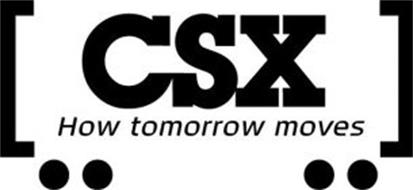The railroad’s operating income was essentially flat, at $1.28 billion, as revenue declined 5%, to $2.97 billion. Net income declined 4%, to $856 million. Earnings per share grew 3%, to $1.08, however, which topped Wall Street analyst expectations by 6 cents.
CSX’s operating ratio improved 1.9 points to 56.8%, which the railroad said was a record for a U.S. Class I system.
“I am extremely proud of our dedicated team of CSX railroaders for once again setting new records for operating efficiency, customer service, and safety this quarter,” CEO Jim Foote said in a statement. “These results reflect our continued commitment toward being the best run railroad in North America and providing our customers with best-in-class service.”
For the year, CSX expects to see a revenue decline of 1% to 2%, but stuck with its expectation of a sub-60% operating ratio and capital spending of between $1.6 billion and $1.7 billion.
Merchandise revenue growth on flat volume was more than offset by revenue declines in the railroad’s coal and intermodal business segments. Both coal and intermodal volume was down 9%, leading to a 5% overall quarterly decline in traffic volume.
Improving on-time performance helped CSX’s merchandise traffic volume hold steady despite a slowing industrial economy, Foote told investors and analysts on the railroad’s earnings call.
Had it not been for the June explosion that permanently shut down the East Coast’s largest oil refinery in Philadelphia, closing the spigot on oil shipments, CSX’s merchandise traffic would have been up 2% for the quarter while merchandise volume sank at the other Class I systems, Foote says.
CSX’s service metrics improved during the quarter. Carload trip plan compliance rose to 74.6% compared to 66.1% a year ago. Intermodal trip plan compliance hit 94.2%, up from 79.8% in the third quarter of 2018.
“CSX’s service has never been this good. Now is the time to harvest opportunities,” Foote says.
Mark Wallace, executive vice president of sales and marketing, says CSX is focusing on converting truckload traffic to its merchandise network in a bid to regain market share lost to highways over the years.
CSX now provides intermodal customers with real-time information on container and trailer trip plan compliance. It will roll out the feature on its ShipCSX website for merchandise customers on Dec. 1.
The railroad’s key operating metrics were mixed for the quarter as cars spent more time in yards but trains moved faster. Average terminal dwell rose 3%, while average train speed was up 13%.
The railroad ran an average of 87 trains per day with distributed power, up from just a dozen in the third quarter of 2018. CSX frequently runs more than 100 trains per day with distributed power, which spreads locomotives through the train consist.
The increased use of distributed power, along with Trip Optimizer — a Wabtec-made cruise control for locomotives — and greater adherence to train-handling rules, helped CSX’s fuel efficiency improve by 5% to a record level for a U.S. Class I railroad, new Chief Financial Officer Kevin Boone says.
The size of CSX’s active locomotive fleet was reduced by 11% compared to the third quarter of 2018, Boone says.
CSX’s key safety metrics improved for the quarter, continuing a trend over the past year. The personal injury rate declined 5%, while the train accident rate plunged by 51%. The train accident rate was a company record, and it also set a record for the fewest number of train accidents in a quarter.
The increased use of automated track inspection cars and drones have helped spot small issues before they become big ones, Foote says.














